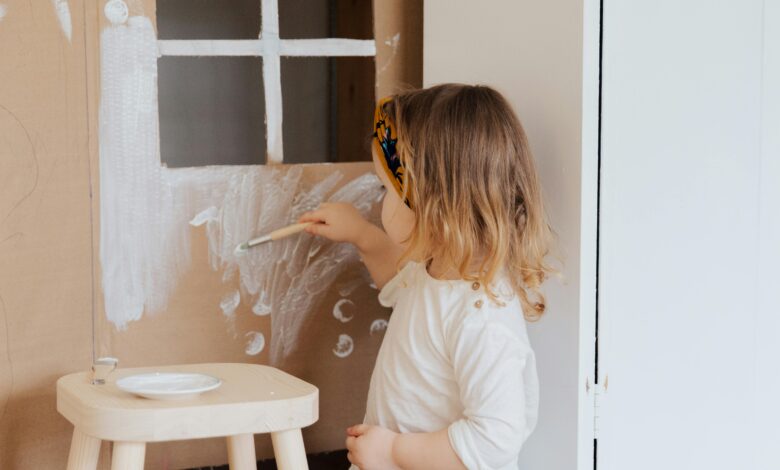How to Extend the Lifespan of Your Interior Paint

Maintaining the beauty of your home’s interior requires more than just choosing the right colors; it also involves taking steps to ensure that your paint job lasts as long as possible. With a few simple strategies, you can extend the lifespan of your interior paint and keep your walls looking fresh for years to come. This guide will walk you through practical steps and best practices to protect your investment and enjoy beautiful, durable walls. If you are unsure of the best materials for your project, consider consulting a professional paint service to guide you through the process. How to Extend the Lifespan of Your Interior Paint
1. Choose High-Quality Paint and Materials

The foundation of a long-lasting paint job begins with your choice of paint. While it may be tempting to cut costs, selecting high-quality paint will save you money and time in the long run. Premium paints generally offer better coverage, durability, and resistance to common household wear and tear. How to Extend the Lifespan of Your Interior Paint In particular, consider paints that have the following characteristics:
Washability: Paints with good washability can be cleaned more easily, meaning dirt and grime won’t cause permanent stains.
Scrub Resistance: In high-traffic areas like hallways or children’s rooms, scrub-resistant paint will stand up better to frequent cleaning.
UV Resistance: Even indoors, natural sunlight can cause paint to fade. Look for paints with UV inhibitors to preserve the vibrancy of your colors.
Using high-quality brushes, rollers, and other tools also plays a key role in the outcome of your paint job. Quality tools allow for more even application and reduce the risk of streaking or premature wear.
2. Perform Proper Surface Preparation
Before you even begin painting, preparing the surface is essential. If you skip this step, even the best paint won’t adhere properly, which can lead to peeling, cracking, or fading over time. Start by thoroughly cleaning the walls to remove dirt, dust, and grease. For areas exposed to moisture, like kitchens or bathrooms, it’s crucial to ensure there’s no mold or mildew present.
Next, patch any cracks, holes, or imperfections with spackling paste and sand the surface smooth. Uneven or damaged walls can cause your paint to wear out quickly, so this step should not be overlooked. Applying a primer, particularly on porous or previously unpainted surfaces, will also help the paint adhere better and last longer. How to Extend the Lifespan of Your Interior Paint
They can offer expert advice on surface preparation and recommend the best products for your specific needs.
3. Use the Right Paint Finish for Each Room
Choosing the right paint finish can make a significant difference in how long your interior paint lasts. Different finishes are more suitable for different areas of your home based on the level of wear and moisture exposure. Here’s a quick breakdown:
Flat or Matte Finish: Ideal for low-traffic areas like bedrooms or ceilings. However, it’s more prone to staining and is harder to clean.
Eggshell or Satin Finish: Great for living rooms, hallways, and dining areas. It’s easy to clean and has a slight sheen that enhances the appearance without being too shiny.
Semi-Gloss or Gloss Finish: Best for high-moisture or high-traffic areas such as kitchens, bathrooms, and trim. It’s durable and easy to wipe clean, but the shinier surface may show imperfections.
By matching the paint finish to the appropriate room, you can help reduce wear and tear, ensuring that your walls stay in great condition longer.
4. Maintain Optimal Indoor Conditions
Even after you’ve applied a high-quality paint with careful surface preparation, the longevity of your paint job can still be influenced by your home’s environment. Factors such as humidity, temperature, and lighting can all impact how well the paint holds up over time.
Control Humidity
High levels of humidity can lead to moisture buildup on your walls, which can cause the paint to peel or form bubbles. In areas like bathrooms and kitchens, where moisture is inevitable, consider using dehumidifiers or installing proper ventilation systems to minimize moisture exposure.
Manage Temperature Fluctuations
Extreme temperature changes can cause the walls to expand and contract, leading to cracks in the paint. How to Extend the Lifespan of Your Interior Paint Keep your indoor temperature steady by using appropriate insulation and ensuring windows and doors are sealed properly to avoid drafts.
5. Clean and Care for Your Walls Regularly
Proper maintenance is one of the easiest ways to extend the lifespan of your interior paint. How to Extend the Lifespan of Your Interior Paint Regular cleaning not only removes dirt and dust but also prevents the buildup of grime that can cause long-term damage. Here are a few cleaning tips:
Dust frequently: Use a microfiber cloth or duster to remove loose dust and debris, particularly in high-traffic areas.
Spot clean as needed: For stains or smudges, use a soft sponge or cloth with warm water and mild soap. Avoid abrasive cleaners that can damage the paint surface.
Wash walls periodically: High-traffic areas may require a more thorough cleaning every few months. Be gentle to avoid removing the paint or causing it to fade.
By cleaning your walls regularly, you reduce the risk of permanent stains and keep the paint looking vibrant.
6. Touch Up and Repaint as Needed
Even with the best care, some areas of your home will inevitably need touch-ups over time. Instead of letting minor imperfections accumulate, perform small repairs as soon as you notice them. Keeping a small amount of leftover paint from your original job can be a lifesaver for quick fixes.
In high-traffic areas, consider scheduling a periodic repaint to keep everything looking fresh. How to Extend the Lifespan of Your Interior Paint Repainting before the paint shows significant wear can help preserve the overall aesthetic and prevent more extensive repairs later.
7. Protect Your Walls from Physical Damage
Lastly, be mindful of physical damage that can wear down your paint prematurely. How to Extend the Lifespan of Your Interior Paint Everyday activities, such as moving furniture, hanging pictures, or even opening doors, can cause chips, scratches, or dents in the paint. To prevent damage:
- – Use doorstops to keep doors from banging against walls.
- – Apply felt pads to the bottoms of furniture to avoid scraping when moving pieces.
- – Be careful when hanging objects, using hooks or nails that won’t leave large holes behind.
Taking small preventative measures can help protect your paint and keep your home looking well-maintained.
Conclusion
By following these steps—selecting quality materials, preparing surfaces properly, choosing the right finish, maintaining optimal indoor conditions, and cleaning and caring for your walls—you can significantly extend the lifespan of your interior paint. Regular touch-ups and protecting your walls from damage will also help preserve their beauty for years to come. With just a bit of effort, your paint job can remain vibrant and long-lasting, ensuring a fresh and inviting space for your home.





